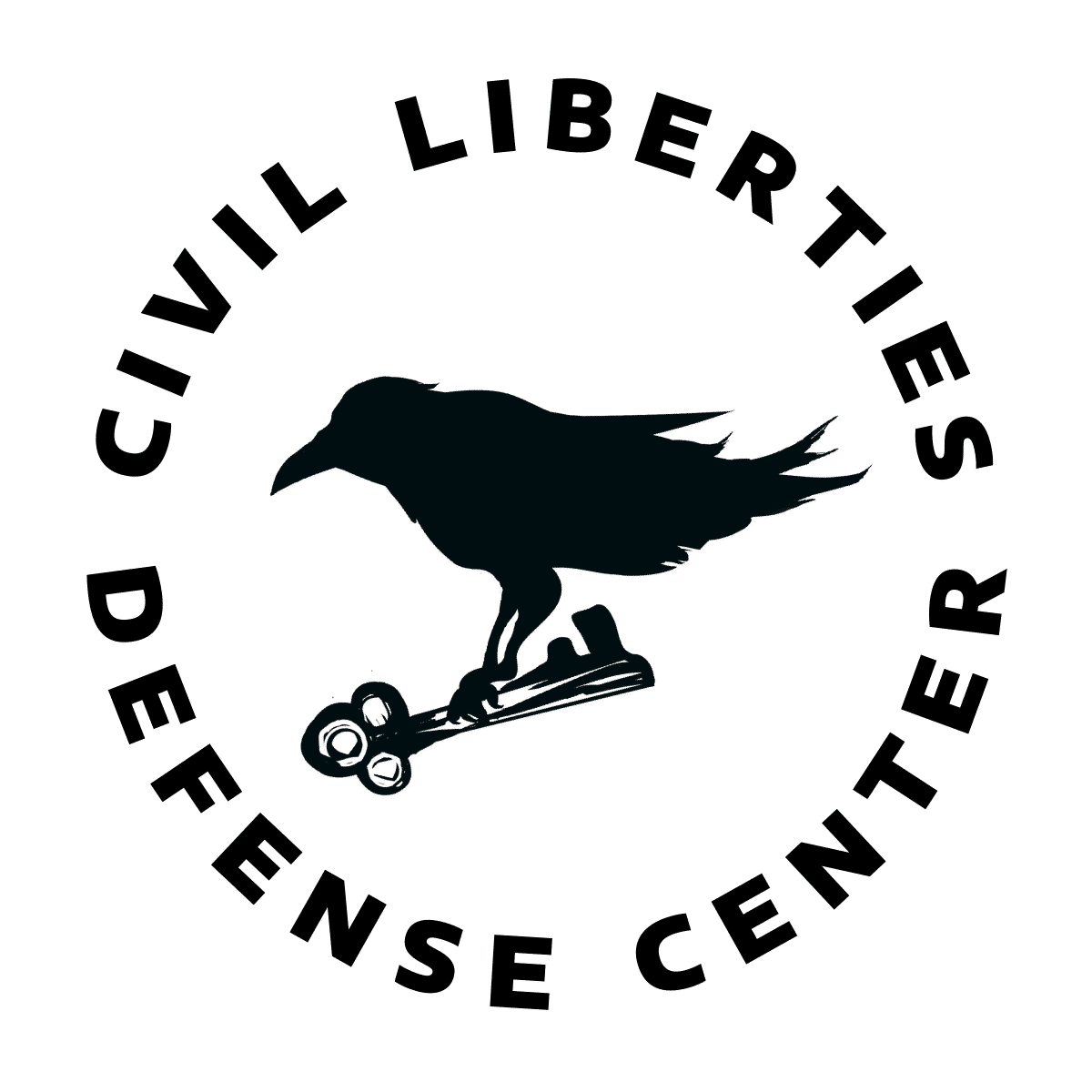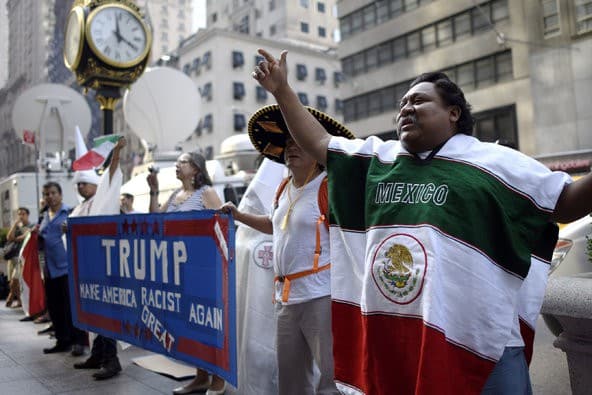Last month, First Amendment defenders won two significant victories in New York. First, protestors of Donald Trump’s racist run for President secured the right to protest in front of Trump Tower in downtown Manhattan. Second, Occupy Wall Street demonstrators won the first step in a class action lawsuit against the City of New York for evicting them from their demonstration site in Zuccotti Park in 2011.
First, in Galicia v. Trump, a group of protestors had assembled on the public sidewalk outside of Trump Tower in Manhattan. Several protestors were wearing white hoods to draw attention to the fact that Ku Klux Klan former leader David Duke has endorsed Trump for President. The protestors also carried signs that said “Make America Racist Again,” a play on Trump’s campaign slogan: “Make America Great Again.” The response of Trump’s private security officers was to attempt to take the signs away from the protestors, ripping one of the signs in the process. When one of the protestors refused to release their sign, the security guard hit the protestor.
The protestors filed a lawsuit against Trump and his security guards in state court in New York for assault, battery, and conversion (i.e. theft of their signs). They argued that they have well-established First Amendment rights to assemble and protest on a public sidewalk, without being subjected to illegal assaults by private security guards. In response, as always, the defendants argued that the protestors and their signs were causing a “public safety” issue.
The court rejected the defendants’ arguments and issued an injunction against Trump’s security guards from “interfering with the plaintiffs’ lawful demonstrations on the sidewalk abutting the property” and “unilaterally interfering with the plaintiffs’ demonstrations or confiscating their signs without first resorting to the proper authorities, unless there is a danger presented where safety concerns require immediate intervention.”
In the second case, Meyers v. City of New York, several Occupy Wall Street demonstrators brought a federal class action lawsuit against the City of New York for evicting them from Zuccotti Park in 2011, and prosecuting and imprisoning them in retaliation for engaging in political free speech activities. The City filed a motion to dismiss the complaint, and the federal court refused to dismiss the plaintiffs’ false arrest and First Amendment retaliation claims.
The court held that the occupation of Zuccotti Park was an “expressive activity” under the First Amendment: “the circumstances of the conduct in this case leave little doubt that physically occupying Zuccotti Park formed part of a clear and particularized political message understood by both the passerby and global observers who viewed it. The demonstrators in Brown used a sit-in to protest a library’s segregation and the [Occupy Wall Street] demonstrators used their occupation of the Financial District’s Zuccotti Park to protest perceived corporate influence on government. In both cases, the expressive conduct at issue was so tied up with the demonstrators’ message that it gave name to the demonstration itself: the “sit-in” in Brown and “Occupy Wall Street” here. In both cases, the location of the conduct was significant to the message: in Brown, the site of a racially segregated government facility and here, an outdoor plaza in the heart of one of the country’s densest collection of financial services corporations. In both cases, the conduct took place within the context of larger political and social movements: the civil rights movement in Brown and the nation’s extended public debate over the government’s role in economic regulation following the so-called “financial bailout” measures authorized during the Great Recession. Those larger contexts supported a likelihood that the conduct at issue would be understood by observers as conveying a particularized message. And in this case, unlike the silent demonstrators in Brown, the [Occupy Wall Street] demonstrators combined their expressive conduct with verbal speech, making their message even more particularized. Thus, the [Occupy Wall Street] demonstrators’ sustained physical presence in Zuccotti Park in the context of an ongoing demonstration against income inequality was expressive conduct.”
The court refused to dismiss the plaintiffs’ false arrest claims: “as currently pleaded, the [Occupy Wall Street] demonstrators entered the Zuccotti Park in compliance with the private owners’ rules granting 24-hour access. The owners then modified or suspended the rules to evict the demonstrators. At all times, including after the change of rules, the demonstrators honestly believed that the original park rules were still in force. . . . An officer of reasonable caution, aware that the Park’s former rules allowed for 24-hour access and that the sudden suspension of the rules had not been conveyed to the demonstrators, could not reasonably believe that they ‘knowingly enter[ed] or remain[ed] unlawfully’ in Zuccotti Park. The officers therefore lacked probable cause to arrest for trespass.” Additionally, “on this case’s current record, no member of the public besides the police, the demonstrators, and interested journalists was present in the vicinity of Zuccotti Park at one in the morning [when the eviction occurred]. No reasonable officer could therefore have concluded that the demonstrators had an intent to cause public inconvenience, annoyance, or alarm, nor that they were recklessly creating a risk of such. Probable cause to arrest for disorderly conduct was thus lacking.” Finally, “the City argues that the [Occupy Wall Street] demonstrators prevented officers from carrying out an unspecified police operation in the park. . . . the operation in question appears to be the eviction of [Occupy Wall Street] demonstrators from Zuccotti Park. . . . Here, Meyers alleges that the NYPD order was unlawful in that it was given in the absence of any illegal activity or conditions. Thus, on the current factual record, no reasonable officer could believe that the order to evacuate was lawful and probable cause to arrest for obstruction of governmental administration was lacking.”
The court further held that the plaintiffs had stated a valid claim for First Amendment retaliation as well as a valid claim that the City should be liable for the conduct of its individual police officers (municipal liability). After defeating this first barrier, the case will now proceed to further litigation.

